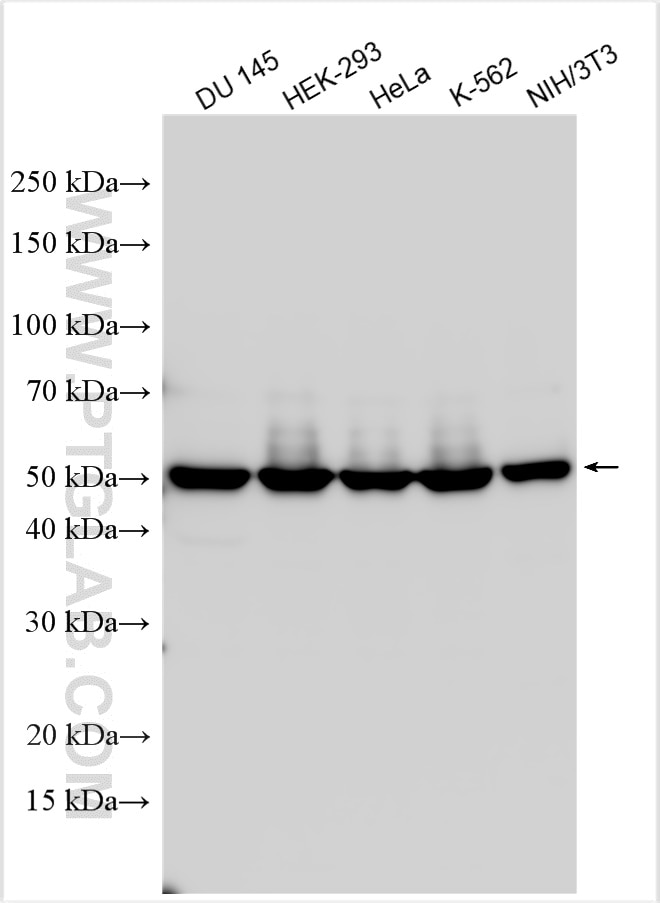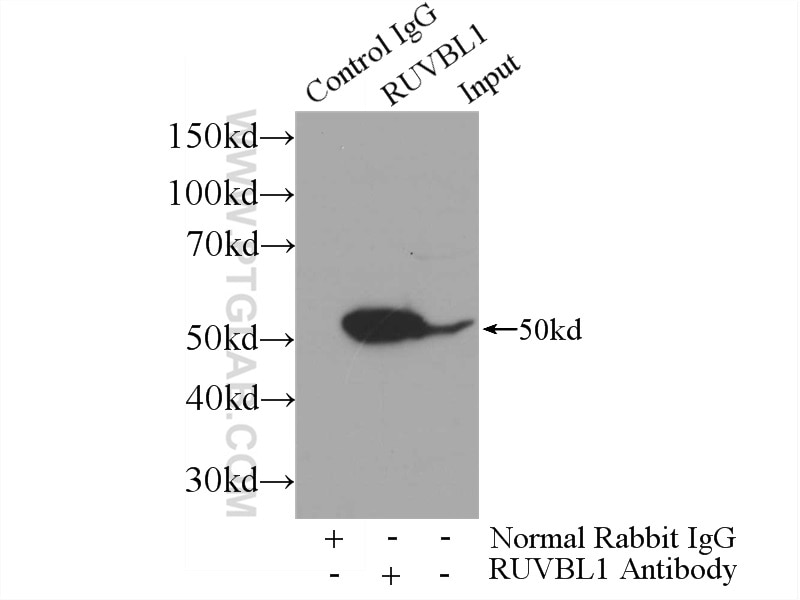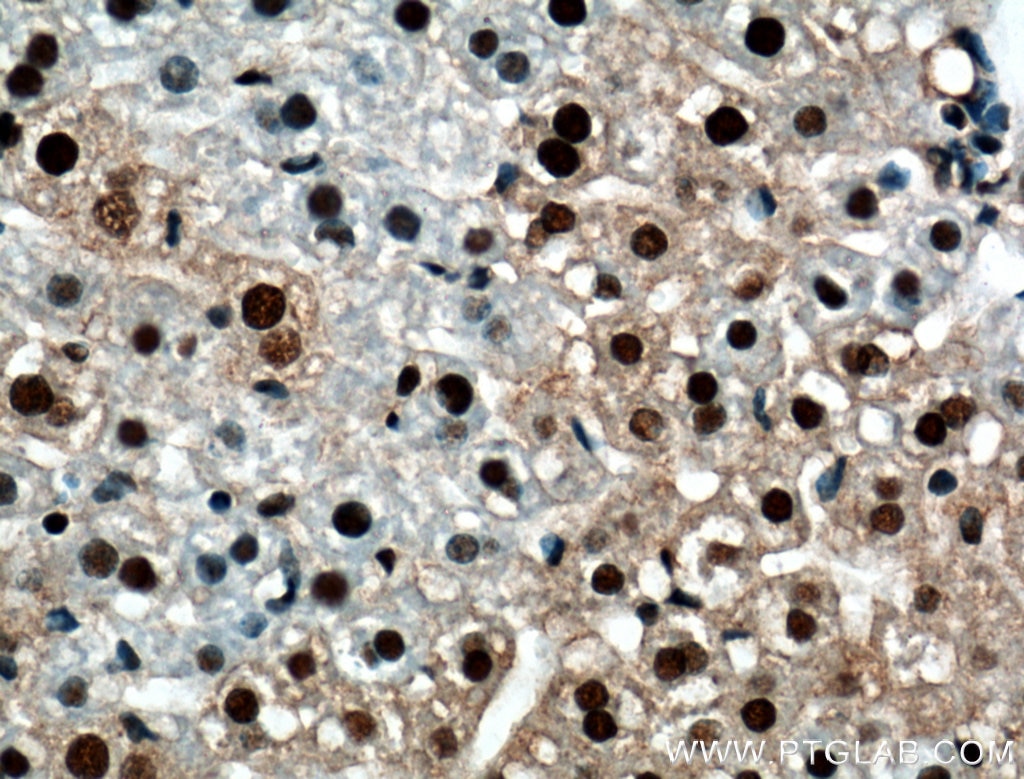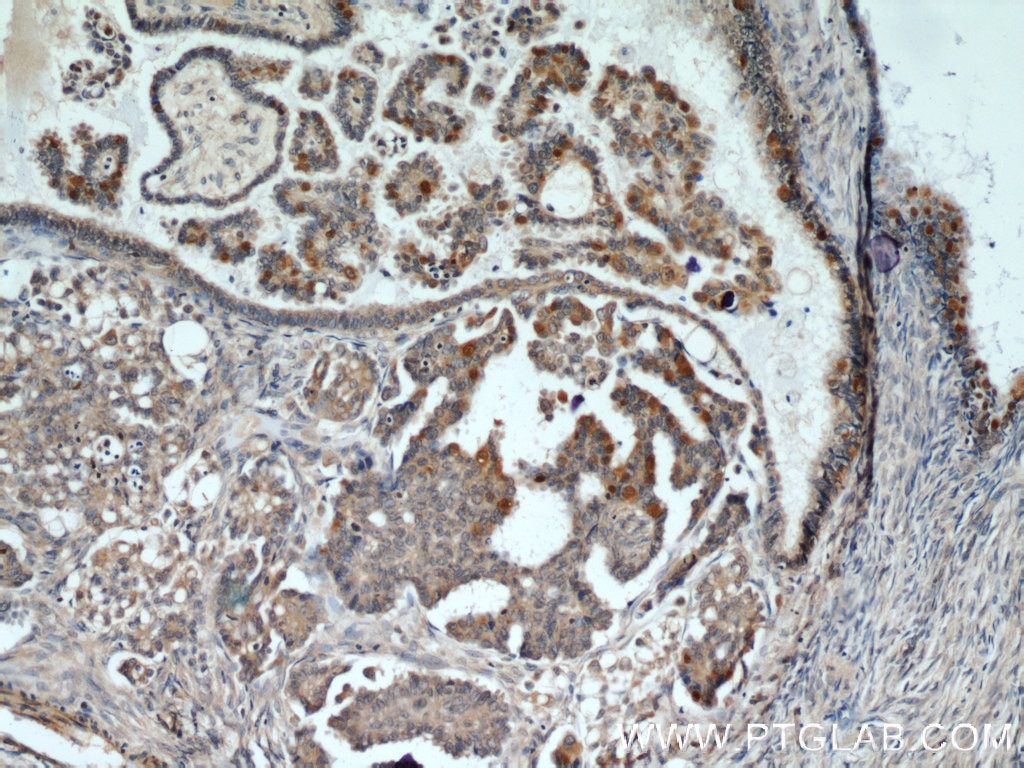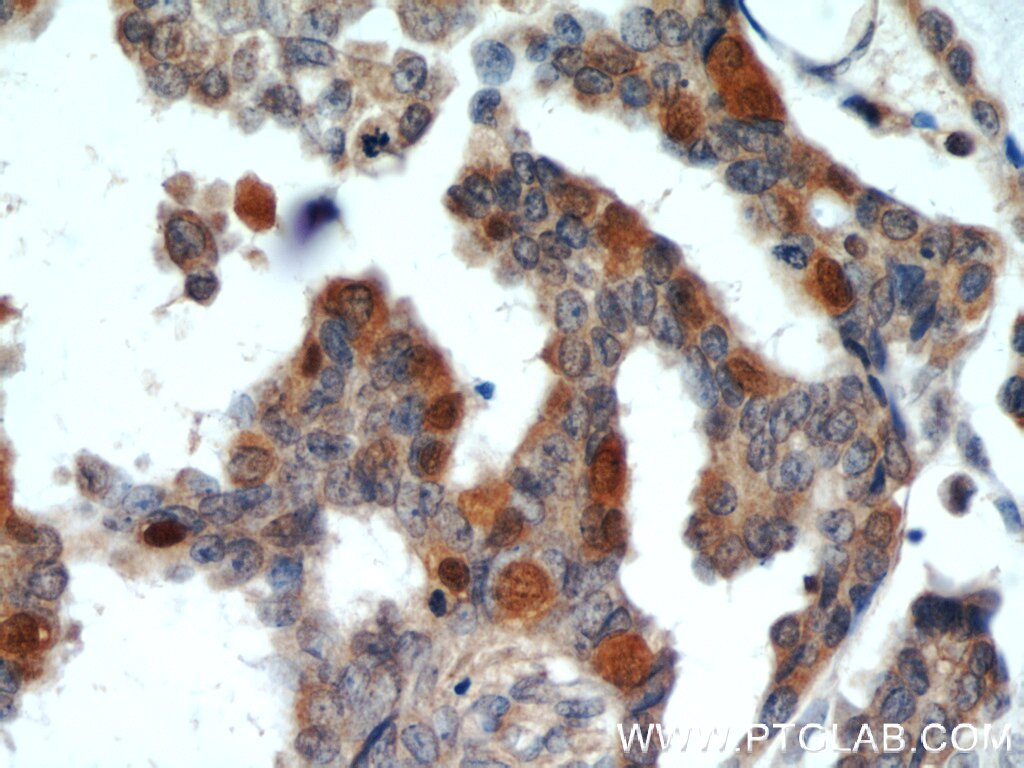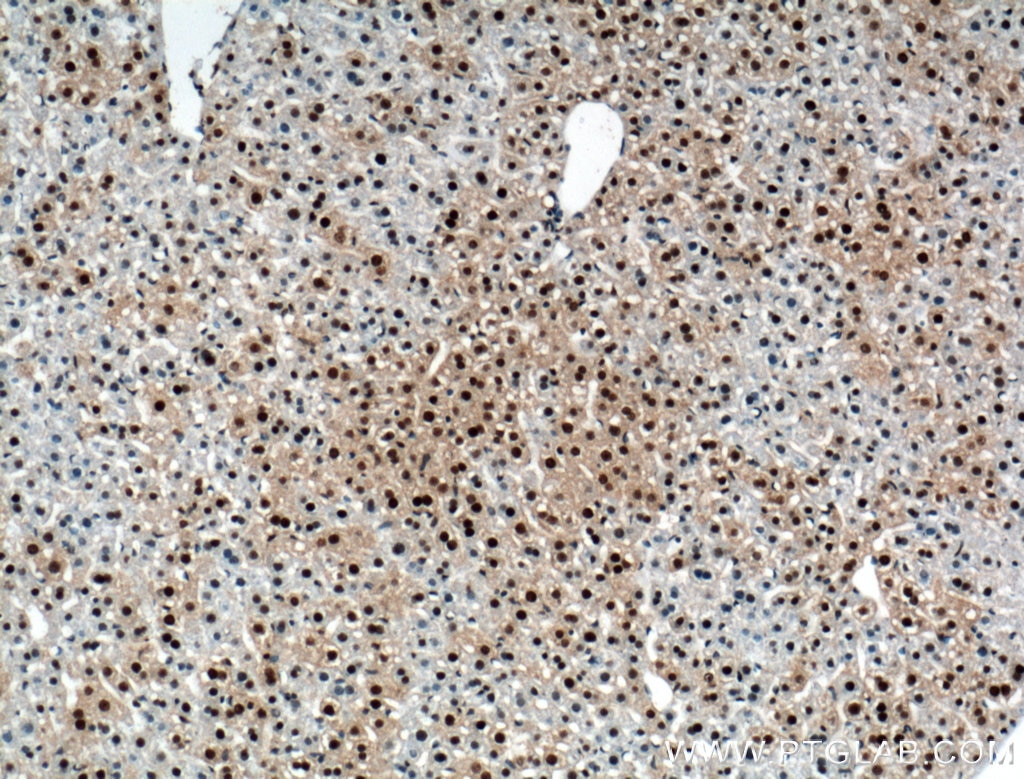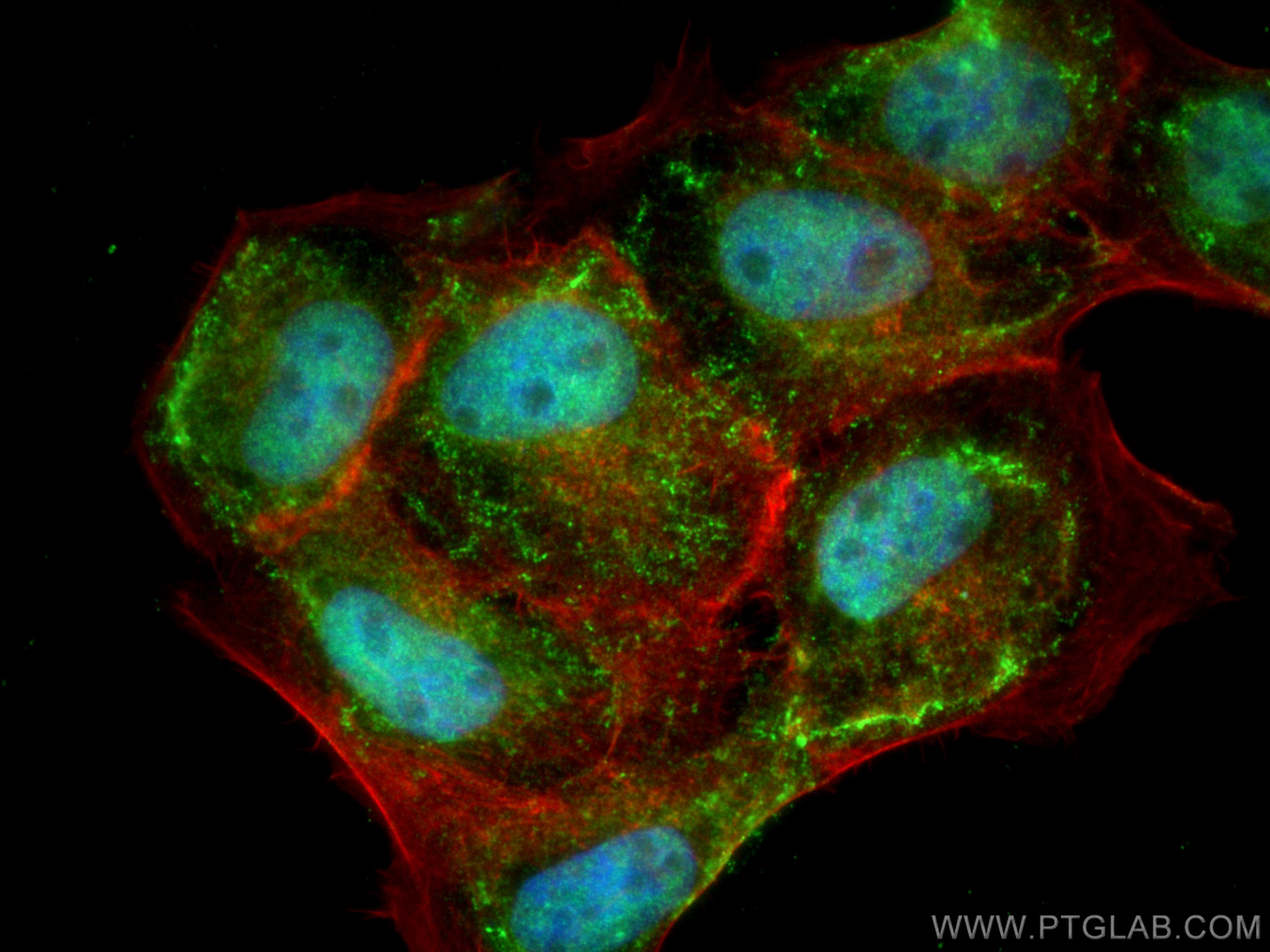Validation Data Gallery
Tested Applications
| Positive WB detected in | DU 145 cells, HEK-293 cells, HeLa cells, K-562 cells, NIH/3T3 cells |
| Positive IP detected in | HeLa cells |
| Positive IHC detected in | mouse liver tissue, human ovary tumor tissue Note: suggested antigen retrieval with TE buffer pH 9.0; (*) Alternatively, antigen retrieval may be performed with citrate buffer pH 6.0 |
| Positive IF/ICC detected in | A431 cells |
Recommended dilution
| Application | Dilution |
|---|---|
| Western Blot (WB) | WB : 1:1000-1:10000 |
| Immunoprecipitation (IP) | IP : 0.5-4.0 ug for 1.0-3.0 mg of total protein lysate |
| Immunohistochemistry (IHC) | IHC : 1:50-1:500 |
| Immunofluorescence (IF)/ICC | IF/ICC : 1:50-1:500 |
| It is recommended that this reagent should be titrated in each testing system to obtain optimal results. | |
| Sample-dependent, Check data in validation data gallery. | |
Published Applications
| KD/KO | See 15 publications below |
| WB | See 43 publications below |
| IHC | See 8 publications below |
| IF | See 5 publications below |
| IP | See 2 publications below |
| CoIP | See 1 publications below |
| ChIP | See 1 publications below |
Product Information
10210-2-AP targets RUVBL1 in WB, IHC, IF/ICC, IP, CoIP, CHIP, ELISA applications and shows reactivity with human, mouse samples.
| Tested Reactivity | human, mouse |
| Cited Reactivity | human, mouse, bovine |
| Host / Isotype | Rabbit / IgG |
| Class | Polyclonal |
| Type | Antibody |
| Immunogen | RUVBL1 fusion protein Ag0281 相同性解析による交差性が予測される生物種 |
| Full Name | RuvB-like 1 (E. coli) |
| Calculated molecular weight | 456 aa, 50 kDa |
| Observed molecular weight | 50 kDa |
| GenBank accession number | BC002993 |
| Gene Symbol | RUVBL1 |
| Gene ID (NCBI) | 8607 |
| RRID | AB_2184405 |
| Conjugate | Unconjugated |
| Form | Liquid |
| Purification Method | Antigen affinity purification |
| UNIPROT ID | Q9Y265 |
| Storage Buffer | PBS with 0.02% sodium azide and 50% glycerol{{ptg:BufferTemp}}7.3 |
| Storage Conditions | Store at -20°C. Stable for one year after shipment. Aliquoting is unnecessary for -20oC storage. |
Background Information
RUVBL1 is a member of the AAA (ATPase associated with diverse cellular activities) family of proteins that is associated with several chromatin-remodelling complexes and has important roles in transcriptional regulation, the DNA damage response, telomerase activity, snoRNP assembly, cellular transformation and cancer metastasis[PMID: 21617703]. It consists of 456 amino acids (50 kDa) and interacts with TATA-binding protein (TBP), which is a central component for transcriptional regulation by forming complexes with various transcription regulators. RUVBL1 is a component of a large nuclear protein complex, possibly the RNA polymerase II holoenzyme. RUVBL1 is also highly homologous to RuvB proteins that function as a DNA helicase promote branch migration of the Holliday junction[PMID: 9588198]. This antibody is a rabbit polyclonal antibody to human RUVBL1.
Protocols
| Product Specific Protocols | |
|---|---|
| WB protocol for RUVBL1 antibody 10210-2-AP | Download protocol |
| IHC protocol for RUVBL1 antibody 10210-2-AP | Download protocol |
| IF protocol for RUVBL1 antibody 10210-2-AP | Download protocol |
| IP protocol for RUVBL1 antibody 10210-2-AP | Download protocol |
| Standard Protocols | |
|---|---|
| Click here to view our Standard Protocols |
Publications
| Species | Application | Title |
|---|---|---|
Nat Immunol Hierarchical regulation of the resting and activated T cell epigenome by major transcription factor families. | ||
Mol Cell Metabolic stress controls mTORC1 lysosomal localization and dimerization by regulating the TTT-RUVBL1/2 complex. | ||
Nat Struct Mol Biol R loops regulate promoter-proximal chromatin architecture and cellular differentiation. | ||
Sci Adv Assembly of the asymmetric human γ-tubulin ring complex by RUVBL1-RUVBL2 AAA ATPase.
| ||
Sci Adv Synthetic lethality by targeting the RUVBL1/2-TTT complex in mTORC1-hyperactive cancer cells.
| ||
